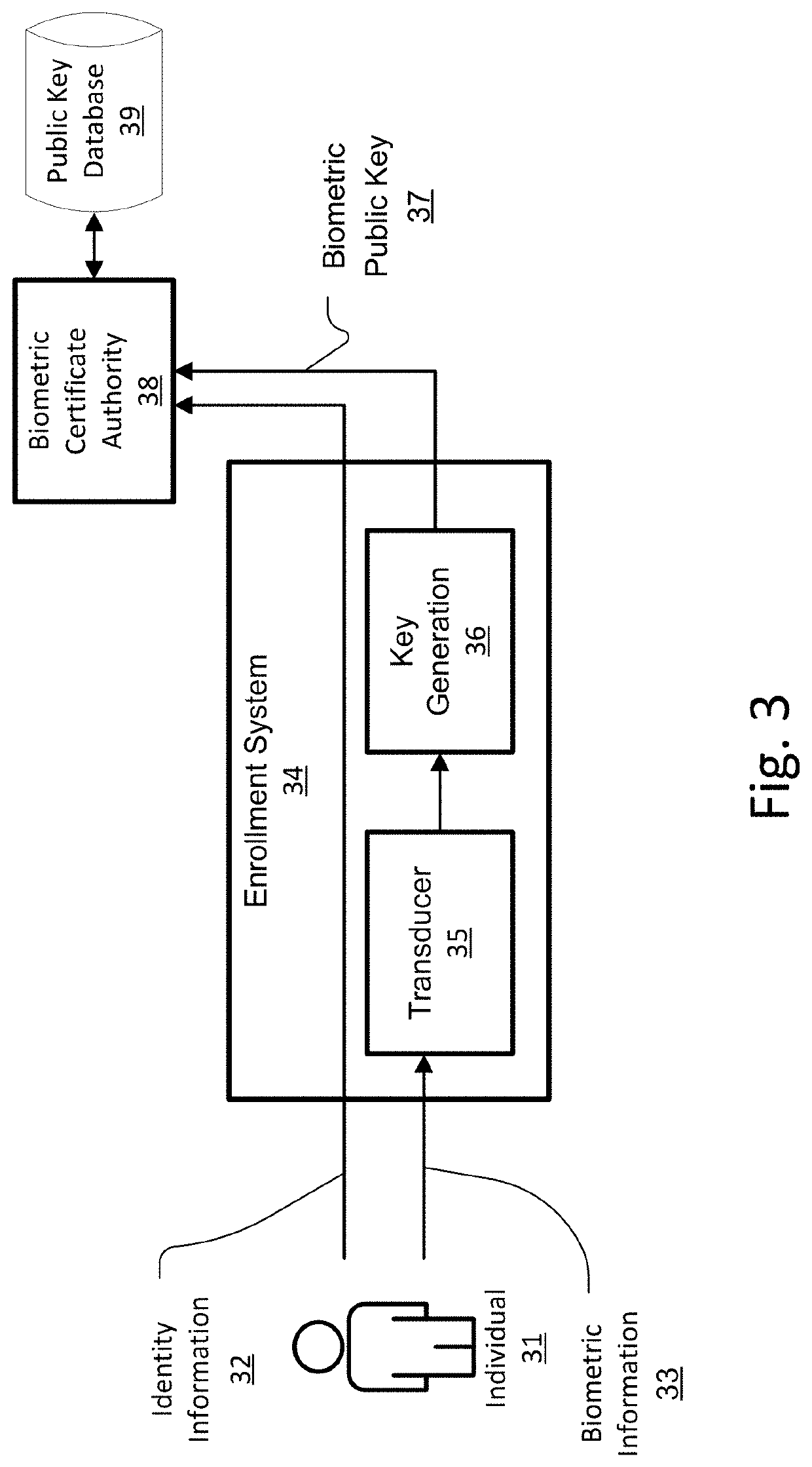System and Method for Securing Personal Information Via Biometric Public Key
a biometric and public key technology, applied in the field of security arrangements, can solve the problems of critical failure, single point of failure of data base, and compromise of secure server,
- Summary
- Abstract
- Description
- Claims
- Application Information
AI Technical Summary
Benefits of technology
Problems solved by technology
Method used
Image
Examples
Embodiment Construction
[0008]Various embodiments of the invention solve the above problems with biometric authentication by avoiding entirely the requirement to store either the original biometric data, or data that can be used to recover it. Instead, biometric data captured from an individual are used to encrypt a secret number, thereby forming a public key characterizing a biometric, or a “biometric public key”. Advantageously, the encryption may be performed in a hardware security module (HSM), for example in an HSM that implements the United States Federal Information Processing Standards (FIPS), series 140, that defines requirements for such modules. The biometric data and the secret number are combined in such a way that biometric data later captured from a subject purporting to be the individual can be used to decrypt the secret number in a verifiable way, despite the fact that biometric data capture is not exactly repeatable.
[0009]These embodiments are particularly robust for several reasons. A bi...
PUM
 Login to View More
Login to View More Abstract
Description
Claims
Application Information
 Login to View More
Login to View More - R&D
- Intellectual Property
- Life Sciences
- Materials
- Tech Scout
- Unparalleled Data Quality
- Higher Quality Content
- 60% Fewer Hallucinations
Browse by: Latest US Patents, China's latest patents, Technical Efficacy Thesaurus, Application Domain, Technology Topic, Popular Technical Reports.
© 2025 PatSnap. All rights reserved.Legal|Privacy policy|Modern Slavery Act Transparency Statement|Sitemap|About US| Contact US: help@patsnap.com



